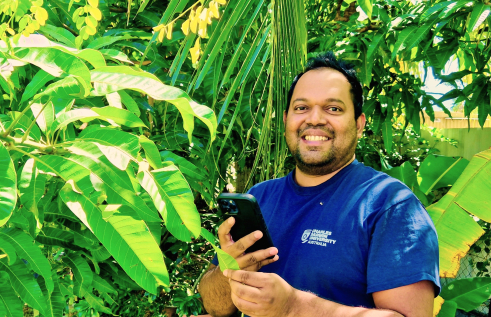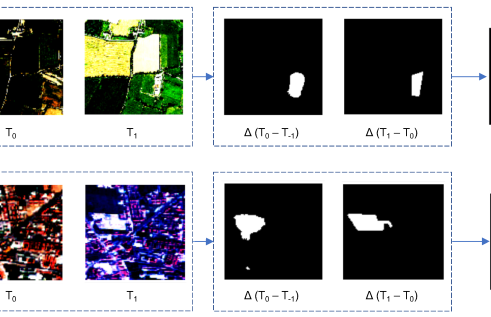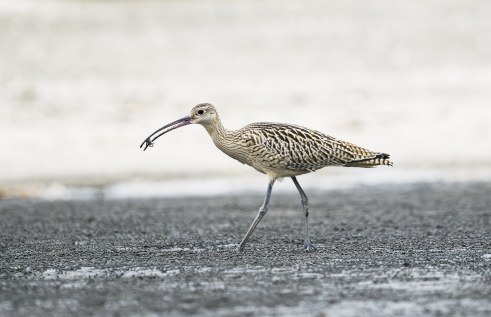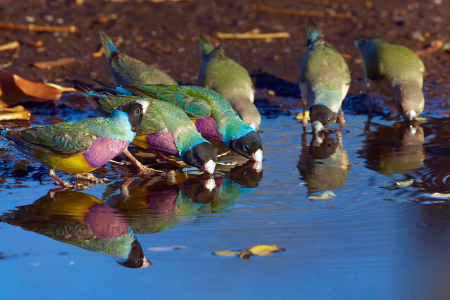News article
Powerful genetic tool aids endangered Gouldian finch
For the first time, Australian scientists have shown that environmental DNA (eDNA) can be used to detect the presence of an endangered bird species simply by collecting a cupful of water from the pools where they drink.
eDNA has emerged as a powerful tool to trace rare and threatened aquatic species but its application in the detection of threatened terrestrial species is still largely untested.
Researchers from Charles Darwin University (CDU), The University of Western Australia, and the Northern Territory Department of Environment and Natural Resources (DENR) have developed a genetic probe that targets and identifies the eDNA of the endangered Gouldian finch, a rainbow-coloured grassfinch endemic to the savanna woodlands of northern Australia.
CDU’s Professor Karen Gibb, who led the study funded by the Australian Government’s National Environmental Science Program, said the eDNA test had the potential to increase knowledge of the distribution and habitat use of Gouldian finches.
“This is essential information to guide land management decisions that will assist the recovery of wild populations,” Professor Gibb said.
Gouldian finches were once found in their thousands from the Kimberley region of Western Australia across to Cape York Peninsula in Queensland.
Pastoralism and the timing and intensity of fires has been linked to the historical decline in the numbers of Gouldian finches, most likely owing to the reduced availability of the grass seeds that form the major part of their die
Because the finches are found in small groups across the vast, remote and sparsely populated north of Australia it is also difficult to track changes in the numbers of Gouldian finches from year to year.
When Gouldian finches drink at waterholes, they leave traces of their DNA behind that can now be detected after they’ve flown away.
The researchers developed a two-in-one eDNA qPCR test that recognises and makes multiple copies of a specific region of mitochondrial DNA found in Gouldian and related finches as well as a species-specific probe to detect only Gouldian finch DNA.
DENR threatened species scientist Brydie Hill said that this relatively simple sampling method will allow the department to develop collaborative monitoring programs across the range of the Gouldian finch.
“Land managers, such as the Jawoyn Rangers, can then map where the finches occur across the landscape and compare it with their fire management to see how their activities are benefitting the recovery of Gouldian finches,” she said.
The study, titled “Development and validation of an environmental DNA test for the endangered Gouldian finch” published in Endangered Species Research was authored by Kimberley Day, Hamish Campbell, Karen Gibb and Alea Rose (CDU), Alaric Fisher and Brydie Hill (Northern Territory DENR) and Simon Jarman (University of Western Australia).
Related Articles

Rooting out plant diseases: Are computers ready to run our farms?
Nature is still too complex for artificial intelligence (AI) modelling to be effective, but the tipping point is close, according to a new study that found the technology may still trip at the last real-world hurdle.
Read more about Rooting out plant diseases: Are computers ready to run our farms?
Tech on the treetops: How AI can protect forests
The Artificial Intelligence model was developed to detect changes in forest cover.
Read more about Tech on the treetops: How AI can protect forests
Volunteers protected Darwin wildlife for 50+ years, but new research suggests it’s time to stop winging conservation efforts
Volunteers have shouldered the burden of shorebird conservation in the Top End for more than half a century, but new research from Charles Darwin University (CDU) suggests it’s time for the government to take responsibility for all of the Northern Territory’s residents – including those with wings.
Read more about Volunteers protected Darwin wildlife for 50+ years, but new research suggests it’s time to stop winging conservation efforts
